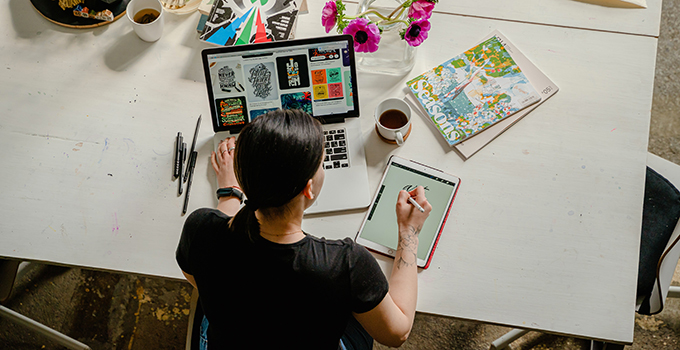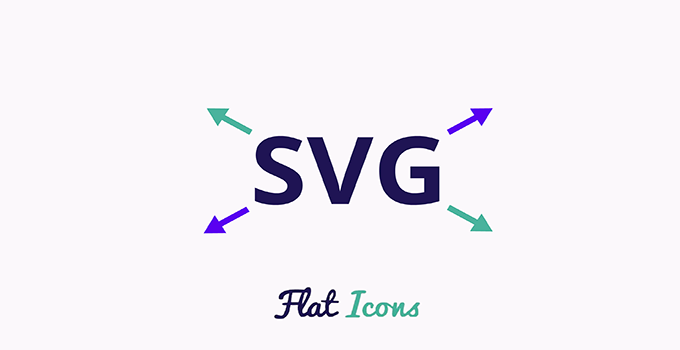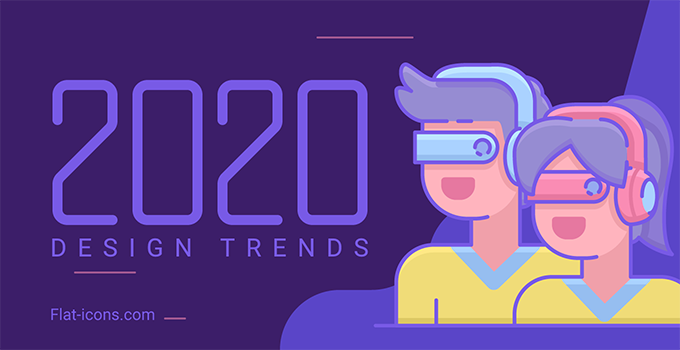Every beginning is difficult – you’ve heard this a million times. But when you’re under pressure and looking for your first job, it isn’t very comforting, is it?
With all its diversity, graphic design is a very competitive field. Sure, it’s fairly easy to land great projects if you have years of experience. However, the market looks quite a bit different through the eyes of an entry-level designer.
Whether the reasons are objective or subjective, disappointment often awaits at the end of the road. This leads to the obvious question: Why is it so hard to get a graphic design job? And, of course, what can you do to improve your chances?
In this article, you’ll learn about the most common problems that junior designers face. On top of this, we’ll also give you 12 tried-and-tested tips that will help pave your way to success.

Low Demand for Juniors
It’s hard to find a more objective reason than this. It’s true – the demand for juniors in the industry isn’t particularly high. It can get even worse if you lack a proper degree that will get your foot through the door.
Luckily, there is still hope. Clients and companies that are hiring put the biggest accent on your skills, and that is something that you can improve. In addition to having skills, you also need to present them well enough for somebody to notice. This leads us to our next problem.
Poor Portfolio and Presentation
Your portfolio is your primary way of attracting a client. Even if your skills are outstanding, nobody will know because they won’t be able to see them. In fact, many managers confess that they never even look at the applicant’s resume if their portfolio is bad.
What are the potential issues here? Well, you might be showing too much work, too little, or simply presenting the wrong stuff. Keep in mind that this is the first thing that your client sees, so it should be the best visual representation of what you can do.
Not Accepting Feedback
Even if your portfolio is polished and presents your best work, not everybody will like it. This is the way things are – people like different things. Whether it’s your client or your manager, you shouldn’t be too defensive about your work.
While some comments can indeed be hurtful, most of what the client says reflects how they see the product and isn’t an attack against you personally. Because of this, you should learn to accept the feedback and try to find a solution.
General vs. Specialized Design
You might have checked all the boxes and still have issues finding even the simplest job. The reason might be the type of services you’re offering.
The graphic design field has grown significantly, and many job posts are now looking for UX, UI, or product designers (instead of a general one). The demand for specialized designers is very high, so choosing a direction might help you in the future.

So, What Can You Do About It?
With the right strategy and attitude, changing your position is more than possible. If you’re feeling stuck, we’ve prepared 12 tips that will help you get moving and find a job faster.
Make Your Portfolio Shine
Your portfolio is your graphic designer ID, which is why it should only showcase your best work. Furthermore, you should tweak it based on the job you’re applying for, so it contains relevant work.
A creative and well-presented portfolio can be a true difference-maker and help you get a job as a graphic designer in a sea of applicants.
Promote Your Work Everywhere
Getting your work seen on the web is a great place to start. You can share your projects on specialized networks like Behance and Dribbble, or with your friends and followers on social media.
Many potential clients visit these websites when looking for graphic designers, so learning how to build a strong online presence is very important.
Try Freelancing
If you didn’t have luck with standard jobs, why not try freelancing? No job is small enough, and working on freelance platforms like Upwork and Freelancer will boost your confidence and make you feel better.
While working on the web and going from one client to the next might be difficult in the beginning, it will give you an opportunity to test yourself and make your portfolio richer.
Invest in Courses and Education
It may sound like a cliché, but investing in education is always a good idea. A college degree gives the students a broad knowledge of graphic design principles and equips them with the skills required to solve problems.
Even if you don’t have formal education as a graphic designer, reading college books and attending courses will save you a lot of trouble down the road.
Find What You Like and Specialize
The term specialization often pops up when talking about the future of graphic design. There are a lot of full-time jobs that advertise expert positions for designers and require UX, UI, or product design knowledge.
For this reason, you should take your time and find what you like and what you’re good at. Once you did this, focus on it and push your career in that direction.
Master the Software
Regardless of the exact job you’re aiming for, you’ll need to use some type of specialized design software. While college courses do cover some of this, the technology is advancing fast and you need to keep up.
Mastering the software is always beneficial because it gives you a better starting point. On top of this, it shows the hiring manager that you have the required skillset to work on your own.
Seek Internships
Internships can be beneficial in multiple ways. First, you’ll get to see up close how a graphic design agency works. Second, it might lead to a full-time job and start your career.
Unfortunately, many internships are unpaid or pay really low. However, if you can withstand this, we highly recommend it because it’s a fantastic experience for an entry-level graphic designer.
Build a Peer Network
If you want to be the first one to know about a job opening, maintaining a peer network is crucial. A lot of design jobs aren’t posted externally, so the only way to hear about them is to ask a colleague.
Don’t worry if you don’t have a strong network yet – you can start building it through the specialized social networking websites we’ve mentioned earlier (Behance and Dribbble).
Participate in Competitions
Besides promoting yourself online, another great way to get noticed is by submitting your design projects to competitions. Not only does this allow you to get creative, but you can also work on something you really like.
Who knows, you might even get an accolade or an award. Rest assured that many employers pay attention to this, so it can help you get a job and kickstart your career.
Practice Soft Skills
A graphic design job often means being part team, so you need to think about developing your soft skills. If you plan to work with people, professional communication and conduct are very important.
Since you’ll potentially be spending a lot of time with your coworkers, your personality also impacts whether you get hired or not.
Launch Your Own Project
Tired of waiting on others? Start your own project! Even though it’s risky, it could be very rewarding and bring you a lot of experience.
Your work can be related to what you actually like, instead of doing tedious entry-level tasks for a large company.
On top of this, your new project will show the clients what you can really do as a graphic designer, and open a world of new opportunities.
Stay Persistent
Many of us tend to forget that persistence is key. After running into closed doors, it’s easy for a graphic designer to get discouraged. Unfortunately, if you stop trying, no doors will ever open.
Remember, even the most successful designers were beginners once. In many situations, all it really takes is for someone to answer and give you a chance. So, lift your head and keep knocking.
Conclusion
There’s no denying that the job market is tough on graphic designers – you’ve certainly felt it on your own skin. However, finding your place under the Sun is more than possible with well-directed effort and creativity.
We would advise that you always stay open to new options and think about tweaking your approach so you get an edge over the competition. Good luck in your job quest!
Is it hard to get a graphic design job?
Yes, especially if you’re a complete beginner. The competition can be very harsh, so you should never stop learning, practicing, and improving yourself.
Is graphic design a dying career?
No, it’s not. With the rapid development of technology, graphic design is as needed as ever. On the other hand, the industry is becoming branched and more diverse, so many designers choose to specialize.
Is there a high demand for graphic designers?
It all comes down to the skills that you have to offer – if you become good at what you do, there is a very high demand (job listings prove this). Graphic design is a very versatile field and there are still enough opportunities for young and aspiring designers.
Why do graphic designers make so little?
This is a myth – not all graphic designers make little. This being said, juniors usually have a low salary because they lack the skillset and have a lot of competition. However, becoming an expert in the field will cause your salary to skyrocket.










